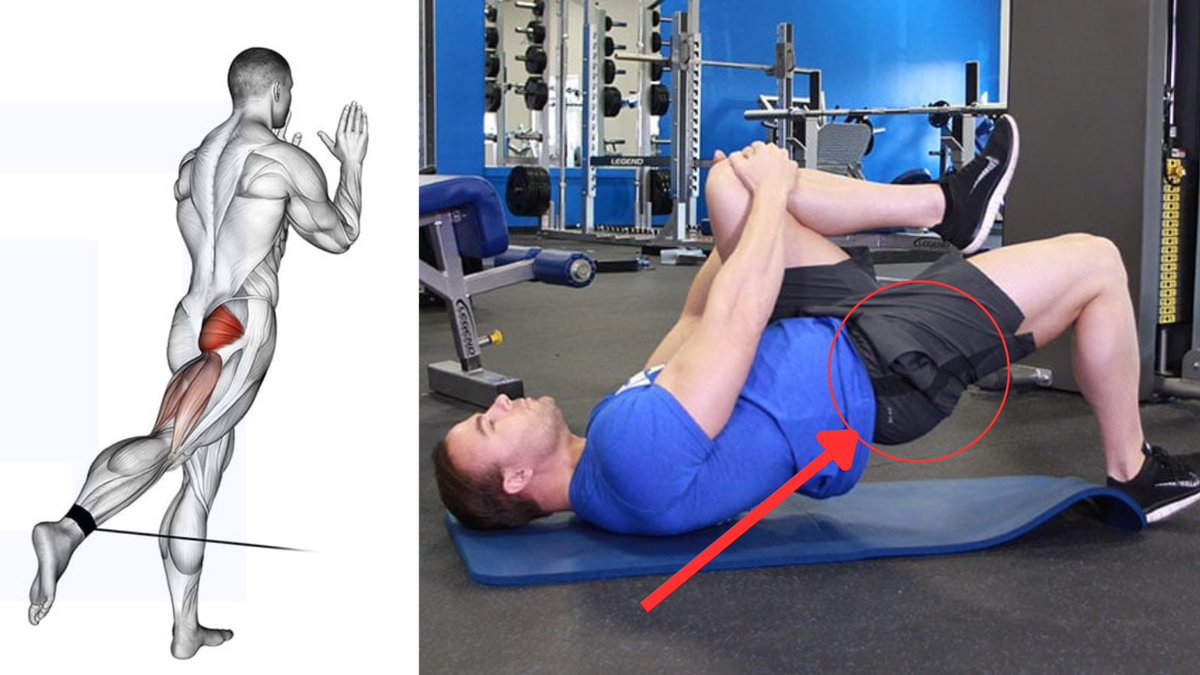A thread on optimizing rowing mechanics for maximizing muscle recruitment & shoulder health
The upper body pull is a staple of most programs.
Depending on the goal, there are a few mechanical factors to consider:
✅Angle of arm
✅Line of pull
✅Targeted muscles
In order to...
The upper body pull is a staple of most programs.
Depending on the goal, there are a few mechanical factors to consider:
✅Angle of arm
✅Line of pull
✅Targeted muscles
In order to...

illustrate my point, I am going to be discussing primarily horizontal rowing variations.
The first distinction that needs to be made is: What is the most optimal rowing form to target the prime movers (big, meaty muscles that do the most work) of the exercise?
The first distinction that needs to be made is: What is the most optimal rowing form to target the prime movers (big, meaty muscles that do the most work) of the exercise?

SCAPULAR RETRACTION VS HUMERAL EXTENSION
“Shoulders back & down” has forever been a cue on rows.
It’s not a bad cue, but if we initiate the row by pulling the shoulder blades (scapula) back, we are taking the scapula to the end-range position of a row right at the beginning of
“Shoulders back & down” has forever been a cue on rows.
It’s not a bad cue, but if we initiate the row by pulling the shoulder blades (scapula) back, we are taking the scapula to the end-range position of a row right at the beginning of
the movement.
The scapula are designed to have synchronized movement with the arm (humerus) in order to stabilize the movement of the humerus, especially under load.
Pulling the scapula back first disrupts that rhythm and forces smaller muscles like the rotator cuff to take
The scapula are designed to have synchronized movement with the arm (humerus) in order to stabilize the movement of the humerus, especially under load.
Pulling the scapula back first disrupts that rhythm and forces smaller muscles like the rotator cuff to take

over for a lack of scapulohumeral rhythm.
Instead, for most peoples’ goals, initiating rows with “humeral extension” is more ideal.
This involves initiating the movement with “elbows back” and a closer relative angle of the humerus to the trunk.
This allows the scapula to
Instead, for most peoples’ goals, initiating rows with “humeral extension” is more ideal.
This involves initiating the movement with “elbows back” and a closer relative angle of the humerus to the trunk.
This allows the scapula to
stabilize the humeral movement while having the freedom to glide on the back ribs without restriction.
This also involves starting the shoulders in a slightly protracted state.
Notice how I “reach” the arms forward slightly at the end of each rep and let the scapula come a
This also involves starting the shoulders in a slightly protracted state.
Notice how I “reach” the arms forward slightly at the end of each rep and let the scapula come a

little bit forward. This is the opposite scapula movement in a row which stretches the prime movers in of that row.
In order for a muscle to optimally contract, it needs to stretch first.
This is basic muscle anatomy 101 and another reason why we don’t want to put those
In order for a muscle to optimally contract, it needs to stretch first.
This is basic muscle anatomy 101 and another reason why we don’t want to put those

muscles in an end-range position with the scapula right away.
You may be wondering, does this apply to vertical pulling movements like pull-ups?
Thanks to the image below by Neumann, 2010, we can see the answer is yes.
You may be wondering, does this apply to vertical pulling movements like pull-ups?
Thanks to the image below by Neumann, 2010, we can see the answer is yes.

The prime movers of a horizontal row are:
✅Lats
✅Rhomboids
✅Traps
Those muscles are the most powerful extensors, retractors, and pullers of the upper body.
It would make sense to train them through a full range of motion rather than push them into an end-range position &
✅Lats
✅Rhomboids
✅Traps
Those muscles are the most powerful extensors, retractors, and pullers of the upper body.
It would make sense to train them through a full range of motion rather than push them into an end-range position &

There are certain contexts for using more humeral abduction (higher elbow height) in a row. I am not saying that is bad.
But what I am saying is that the cues we choose matter for performance & health.
But what I am saying is that the cues we choose matter for performance & health.
Cues for humeral extension:
✅Get protraction (reach) at the end of each rep
✅Initiate the movement with “elbows back” rather than shoulders back
✅”Keep shoulders out of ears”
I want to thank Kassem Hanson and Ben Yanes as people who have influenced my thinking on this.
✅Get protraction (reach) at the end of each rep
✅Initiate the movement with “elbows back” rather than shoulders back
✅”Keep shoulders out of ears”
I want to thank Kassem Hanson and Ben Yanes as people who have influenced my thinking on this.
• • •
Missing some Tweet in this thread? You can try to
force a refresh
















